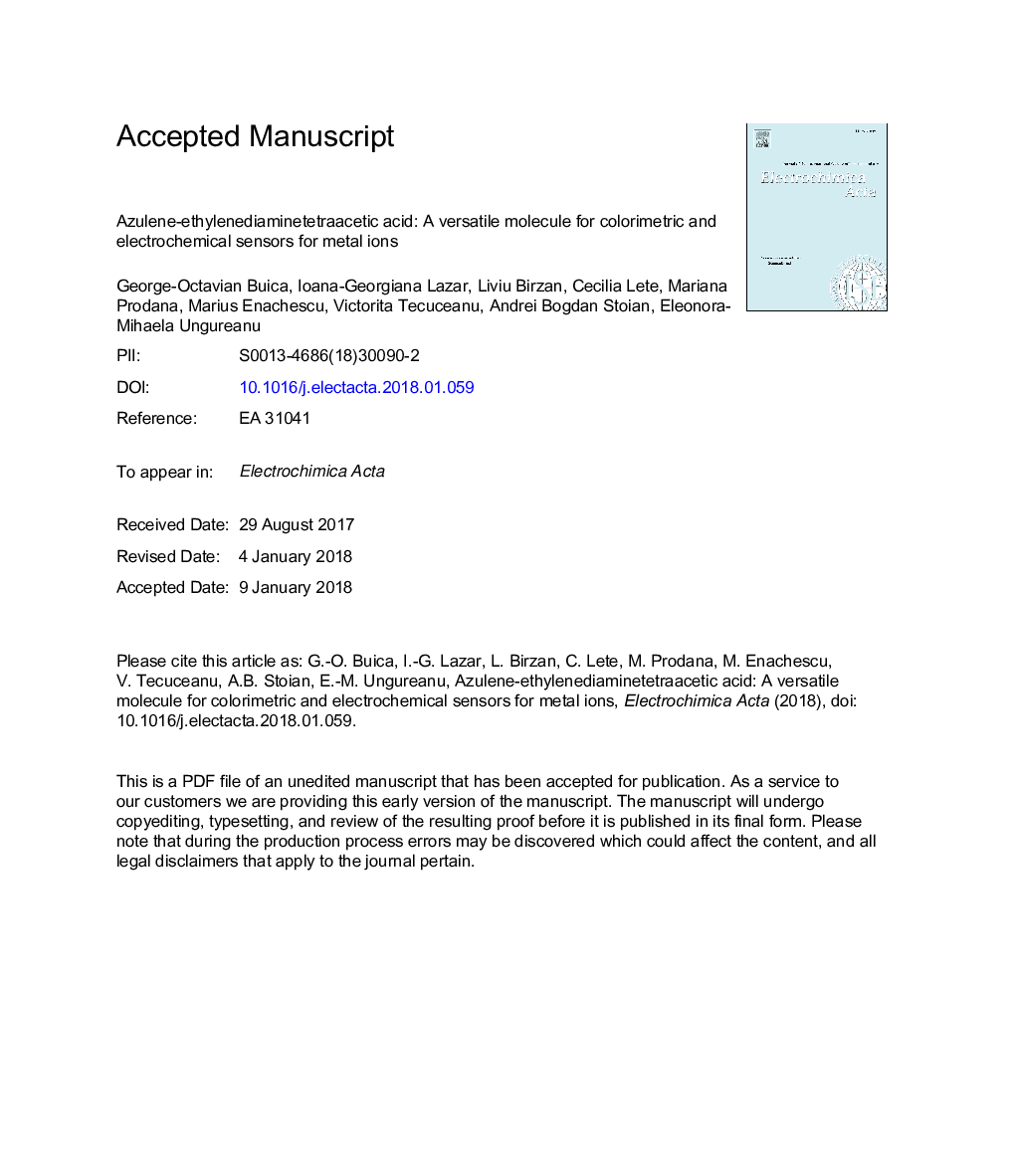| Article ID | Journal | Published Year | Pages | File Type |
|---|---|---|---|---|
| 6604441 | Electrochimica Acta | 2018 | 32 Pages |
Abstract
A new synthesized molecular receptor, 2,2'-(ethane-1,2-diylbis((2-(azulen-2-ylamino)-2-oxoethyl)azanediyl))diacetic acid (L) has been used as building block for the development of new colorimetric and electrochemical sensors for metal ions complexation. The monomer L shows a high selectivity towards mercury ions among other cations, as highlighted by naked eye and UV-Vis spectra. The oxidative electropolymerization of L on glassy carbon electrodes lead to complexing polyL coated electrodes. They have been characterized by electrochemical techniques, their surface morphology and topography being evaluated by scanning electron microscopy and atomic force microscopy. These new modified electrodes show the ability to complex metal ions using chemical preconcentration-anodic stripping voltammetry technique.
Related Topics
Physical Sciences and Engineering
Chemical Engineering
Chemical Engineering (General)
Authors
George-Octavian Buica, Ioana-Georgiana Lazar, Liviu Birzan, Cecilia Lete, Mariana Prodana, Marius Enachescu, Victorita Tecuceanu, Andrei Bogdan Stoian, Eleonora-Mihaela Ungureanu,
